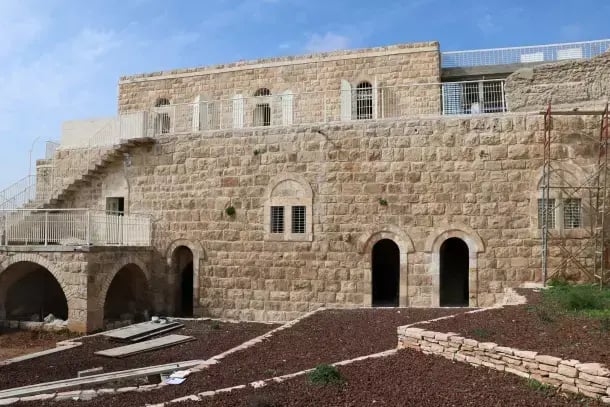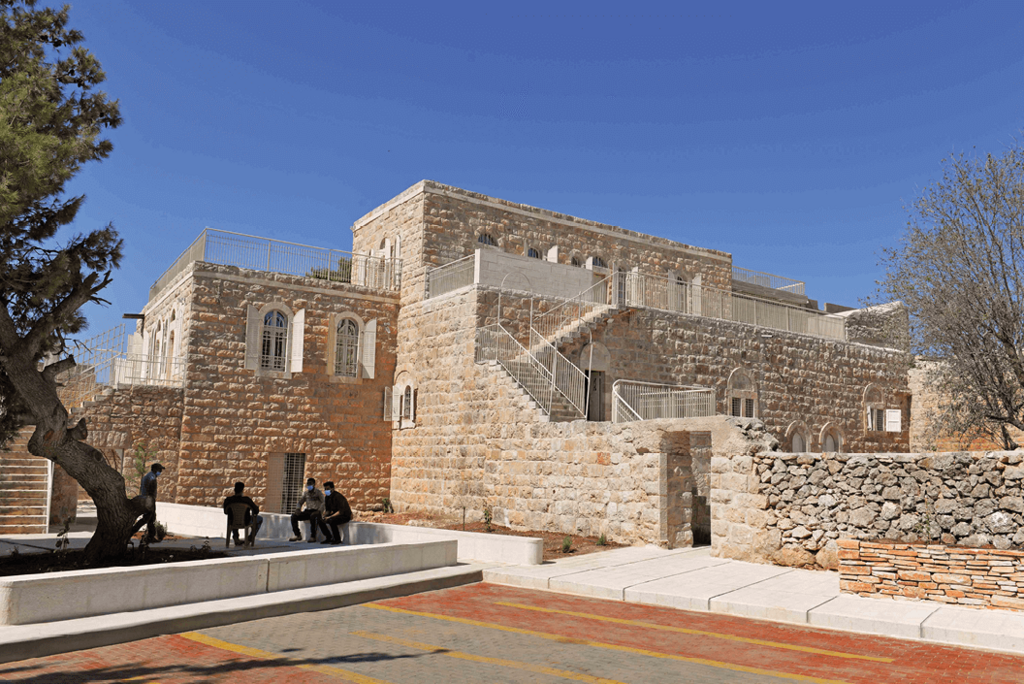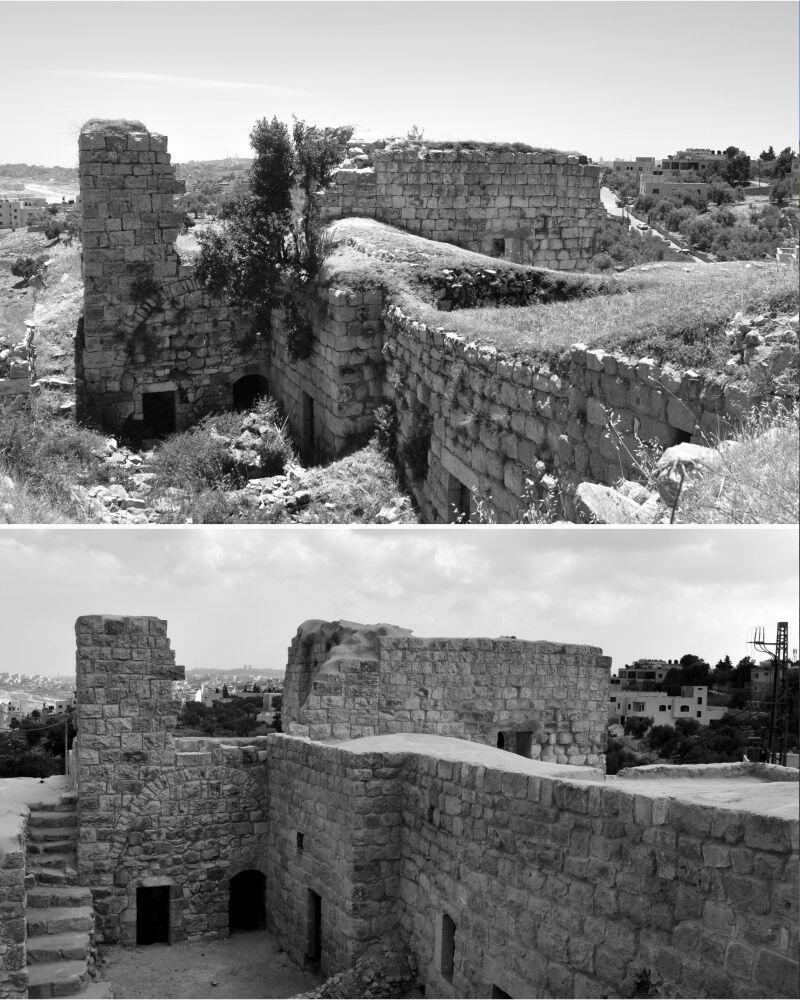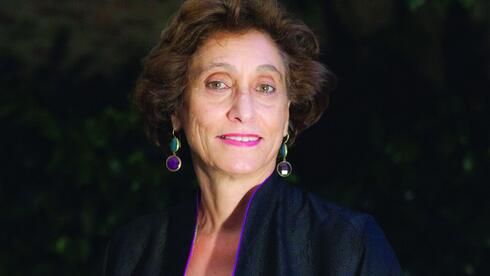Palestinian architect Suad Amiry received exceptional international recognition at the end of September when she was awarded the European Prize for Architecture – one of the most prestigious and significant awards in the world.
Amiry, who has devoted most of her work to preserving Palestinian architectural heritage and revitalizing historic buildings, has succeeded in transforming preservation from a purely technical task into a social, cultural, and political medium.
6 View gallery


Suad Amiry
(photo: Courtesy of The Chicago Athenaeum Archives)
Her award is not only a personal achievement but also a testament to the central role of Palestinian architectural preservation in international professional and cultural discourse, especially during the complex period marked by the ongoing war of the past two years.
It also serves as a reminder that architecture is not only about buildings and stones, but about identity, memory, and the living community that exists between them.
For many years, historic houses in Palestinian cities stood neglected and crumbling – roofs collapsed, walls cracked and courtyards were turned into storage spaces or abandoned. Rapid urbanization combined with a lack of resources led to prolonged deterioration, and many buildings faced the risk of collapse or demolition.
In recent decades, a comprehensive preservation and renovation process began, restoring historic buildings and converting them into cultural centers, educational institutions and community spaces. The rehabilitation focused not only on the physical aspects of the structures – but also on reconnecting them to the daily lives of local communities.
The initiative has been led by Palestinian architect Suad Amiry, who may not be widely known to the general public, but in the international architecture world, she is recognized as a central and influential figure in the field of preservation in the Middle East.
6 View gallery


Restoration Project of Al Huqqiyya Palace – Phase II- Qalandia, 2020
(photo: Courtesy of Riwaq)
At 74, Suad Amiry has spent decades preserving Palestinian architectural heritage and revitalizing historic buildings across the West Bank and Gaza. Her work primarily focuses on restoring stone houses, public courtyards, and sites of historical value, but her influence extends far beyond physical preservation.
For Amiry, architecture is not merely a matter of materials and construction; it is a social and cultural tool through which communities can be reconnected to spaces from which they were displaced, strengthen their sense of belonging, and create new centers of life in neglected areas.
Her work has been recognized through international awards and publications over the years, but receiving the European Prize for Architecture positions her among the most prominent figures on the international stage – providing global recognition for her work and allowing the world to glimpse the richness and potential impact of Palestinian architecture, as it lives and breathes.
6 View gallery


Revitalization of Birzeit Historic Centre, Birzeit, 2007-2011
(photo: Courtesy of Riwaq)
Suad Amiry heads the Riwaq Center (Riwaq, meaning a covered terrace with arches, a common design element in Islamic architecture) for architectural preservation in Ramallah. The center is a nonprofit organization specializing in preservation.
Founded in 1991 by Amiry, at a time when she was responsible for cataloging thousands of historic buildings and restoring hundreds of monuments and key cultural sites in Palestinian cities, Riwaq has focused on preservation, research and monitoring of buildings across the West Bank and Gaza, as well as rehabilitation of villages throughout the West Bank.
Over the three decades since its founding, the Riwaq Center has completed more than 100 preservation and restoration projects, including major monuments in Jerusalem’s Old City and the renovation of historic streets in the heart of Bethlehem.
The award, given annually by the European Center for Architecture in collaboration with the Chicago Museum of Architecture and Design, recognizes architects who commit to advancing the principles of European humanism and the art of architecture. It also honors architects who adopt a critical, intellectual, and artistic approach to building and urban design.
The prize is not solely a lifetime achievement award; it acts as an incentive for new ideas, encourages forward-thinking, and challenges the profession to engage with complex questions about buildings and their surroundings, pushing boundaries to achieve deeper and more meaningful results.
6 View gallery


Al-Huqqiyya Mansion in the Historic Center of Qalandiya Village, 2018
(צילום באדיבות Riwaq)
As part of awarding the prize to Amiry, Christian Narkiewicz-Laine, architecture critic and president of the Chicago Museum, remarked:
“In her mission to preserve Palestinian architecture, Amiry focused on the challenging complexities of safeguarding Palestinian collective memory through projects that document and restore architectural heritage sites across Palestine. Initiatives such as the ’50 Villages Rehabilitation Project’ and the ‘Saving Belt Project’ have transformed the Riwaq Center into a platform where heritage serves as a medium for addressing urgent and evolving social, economic, cultural, and political concerns. In her work, she places residents and users at the center of design, preserving buildings that are both economical and generous, while maintaining a full national identity and architectural history of the Palestinian Authority”.
Amiry was born in 1951 in Damascus to refugee parents displaced by the 1948 war, part of the Palestinian diaspora that fled to neighboring countries. She and her family later moved to Amman, Jordan, and she grew up in Beirut. She studied architecture at the American University of Beirut, continuing her studies at the University of Michigan and the University of Edinburgh in Scotland.
She served on the faculty of Birzeit University in the West Bank, and in 1991 left the university to establish and lead the Riwaq Center. In parallel with her academic and professional work, she was a member of the Palestinian delegation for peace negotiations with Israel in Washington from 1991 to 1993. Later, she held several senior positions in the Palestinian Ministry of Culture, and in 2006 was appointed Vice Chair of the Board of Trustees of Birzeit University.
6 View gallery


Before and After Restoration by Riwaq, the West Bank
(photo: Courtesy of Riwaq)
One of the first projects initiated by Amiry was the architectural survey and documentation of historically significant buildings in the West Bank and Gaza. She led a diverse team of students, architects, archaeologists and historians, launching the project in 1994.
The fieldwork and research culminated in the publication of the Riwaq Historic Buildings Register, completed in 2006. The register documented information on over 50,230 historic buildings, half of which were abandoned, across 16 cities and 406 villages. The work also included the publication of three volumes detailing the buildings’ histories, along with maps and photographs. The project revealed that nearly 50% of these historic buildings in rural areas of the West Bank and Gaza were concentrated in just 50 villages, highlighting the importance of preservation and research in rural regions.
Another project spearheaded by Amiry is the “Life Jacket Project”, launched in 2015 in villages in northwest and northeast Jerusalem (including Jaba, Kafr Aqab, Qalandiya and al-Jib). The initiative involved constructing temporary structures and specialized frameworks designed to protect the roofs of historic houses at risk of collapse or demolition, thereby preserving Palestinian architectural heritage.
The project goes beyond physical preservation: it aims to leverage the social and economic potential of the villages, contributing to residents’ stability on their land while addressing geopolitical challenges in the Jerusalem area, including separation, displacement, and marginalization of local communities. Through this initiative, Amiry proposed creative solutions that combine architectural preservation with social and economic commitment, emphasizing the determination of residents to maintain their connection to the land and strengthen their community and cultural identity under challenging conditions
Over the years, Suad Amiry wrote and published several books on Palestinian architecture, including: “Space, Proximity, and Gender: The Social Dimension of Peasant Architecture in Palestine” (1987), “The Palestinian Village House” (1989), “Traditional Floor Tiles in Palestine” (2000), and “Earthquake in April” (2002). In addition to her status as a respected architect, Amiry authored award-winning and bestselling books. One of her works, “Cappuccino in Ramallah (Notes from the Lockdown)” (2003), was translated into Hebrew and published by Babel. In this book, she paints a vivid picture of daily life under Israeli occupation, depicting the unusual routines of a Palestinian citizen during periods of curfew and lockdown, blending personal insights with a portrayal of a complex political and social reality.
Alongside Amiry, the award was also given to German architect and architectural theorist Patrick Schumacher – the legendary partner of the late, award-winning Iraqi-born architect Zaha Hadid (1950–2016). Schumacher, known as a prominent and sometimes controversial theorist, continued to lead Hadid’s firm and currently focuses mainly on research and design in the metaverse – the next stage in the evolution of the internet, consisting of shared virtual social spaces and the integration of real and virtual communication environments.
6 View gallery


Mayfair, Melbourne, by Zaha Hadid Architects
(Render by VA)
“Schumacher possesses deep knowledge of architectural history and embraces radical theories. He has never simply replicated Hadid’s status quo, but seeks meaningful architecture, expressed in the buildings he continues to design today—structures that resist stylistic categories, constantly evolve, and remain fresh in their approach,” said Christian Narkiewicz-Laine.

